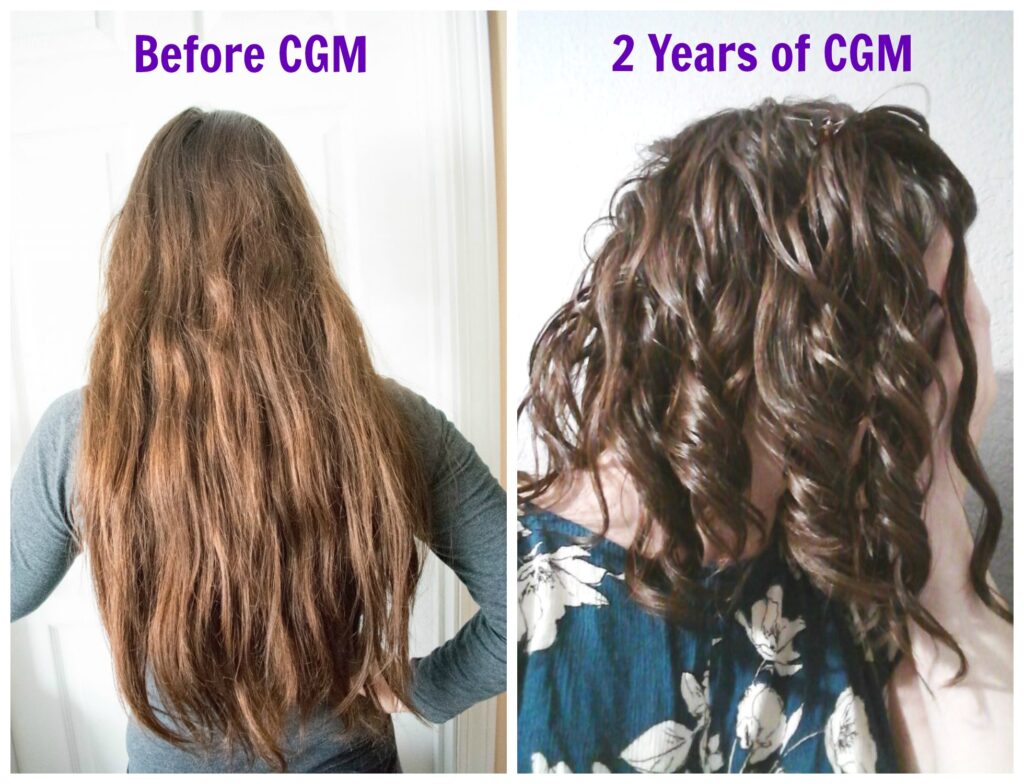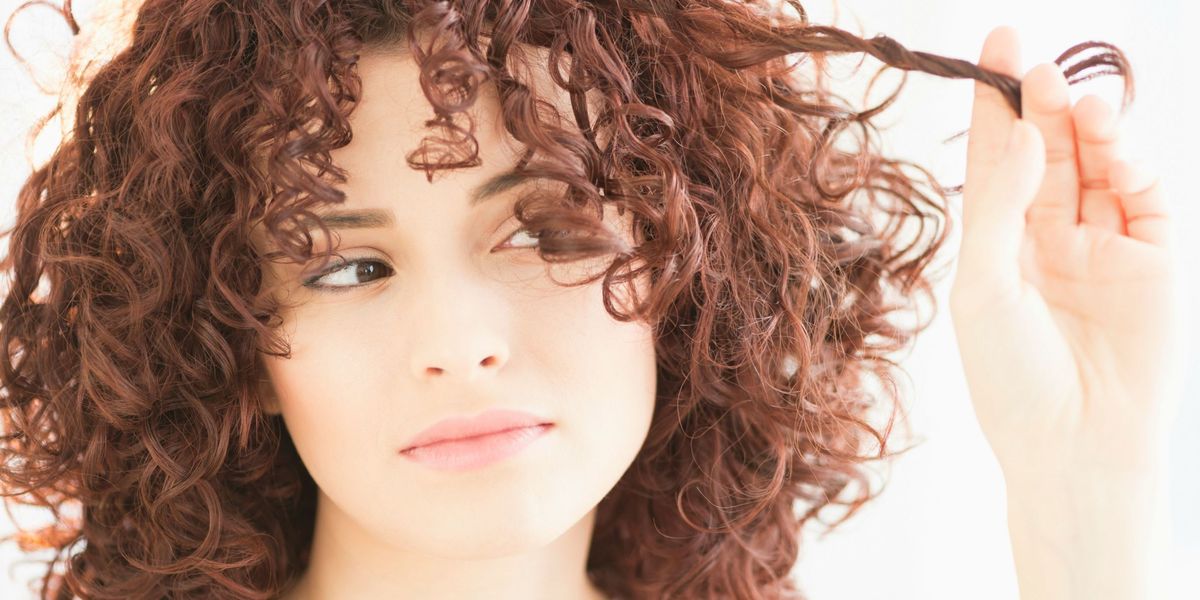Awesome Tips About Why Does Curly Hair Grow Latina Black Hairstyles

Read our need to know tips to grow long and healthy curly hair.
The Science Behind Curly Hair
The Structure of Hair Strands
Every strand of hair you see on your head is a marvel of biology. A typical hair strand consists of three layers:- Cuticle - The outermost layer, made of overlapping cells like roof shingles, which protect the hair.
- Cortex - The middle layer, packed with keratin proteins, determines hair strength, elasticity, and texture.
- Medulla - The innermost layer, present only in some hair types, adds structure but has less influence on curl patterns.
Hair Follicle Shape and Curvature
Hair texture starts beneath the surface—literally. The shape of your hair follicle determines whether your hair grows straight, wavy, or curly:- Straight Hair: Round follicles produce straight strands.
- Curly Hair: Oval or elliptical follicles produce curls, with tighter curls coming from more pronounced oval shapes.
- Wavy Hair: Falls somewhere in between, with slightly flattened follicles.
Did You Know? Curly hair tends to be drier than straight hair because natural oils from the scalp struggle to travel down the twists and turns of each strand. That’s why hydration is so critical for maintaining those curls.
Genetics and Curly Hair
If you’ve ever blamed your parents for your unruly curls—or wished you could thank them for your gorgeous ringlets—you’re absolutely right. The texture of your hair is largely a result of genetics, making your curls a family affair. But how does DNA determine whether your hair is straight, wavy, or curly? Let’s dive in.The Role of DNA in Determining Hair Type
Your hair’s texture is governed by a combination of multiple genes, which influence everything from the shape of your follicles to the proteins in your hair strands. Some key factors include:- Gene Variants: Specific gene combinations influence hair type. For example, the trichohyalin gene (TCHH) plays a big role in keratin production, affecting the curliness of hair.
- Inheritance: Your hair type isn’t just from one parent; it’s a mix of genetic contributions from both. This explains why siblings can have entirely different hair textures.
- Ethnic Diversity: Hair textures often vary across populations. For instance, curly hair is more common in African and Afro-Caribbean populations, while straight hair is dominant in East Asian groups.
Case Study: The Global Curl Map
- Africa: High prevalence of tight, coily curls evolved as an adaptation to hot climates. The tight curls create an insulating layer of air around the scalp, protecting against heat.
- Europe: A mix of straight, wavy, and curly hair types, reflecting a genetic melting pot from diverse ancestry.
- Asia: Straight hair dominates, linked to a specific variation of the EDAR gene, which affects follicle shape.
- Latin America: Often a blend of wavy and curly hair due to the diverse genetic heritage in the region.
Evolutionary Perspectives on Hair Texture
But why did curly hair evolve in the first place? Scientists suggest it’s linked to adaptation to environmental conditions:- In hot, sunny climates, curly hair offered protection by reducing direct sun exposure while allowing air circulation around the scalp.
- In colder climates, straight hair may have evolved to help with heat retention, lying flat against the scalp to conserve warmth.
Fun Fact: Did you know that curly hair is considered a dominant trait in genetic terms? This means if one parent has curly hair, there’s a higher chance their child will inherit curls. If both parents have curls, it’s almost guaranteed!
Chemical and Molecular Factors
While genetics and follicle shape set the foundation for curly hair, the story doesn’t end there. The curliness of hair also depends on its chemical composition and how molecules within the strands interact. Let’s uncover how proteins, bonds, and even hormones influence those bouncy curls.Protein Composition of Hair
Your hair is made mostly of keratin, a fibrous protein that gives strands their structure and strength. The way keratin behaves within the cortex layer of hair is pivotal in determining its texture.- Keratin Arrangement: In straight hair, keratin molecules are evenly distributed. In curly hair, they cluster unevenly, causing the strand to bend and twist.
- Disulfide Bonds: These are chemical bonds formed between sulfur atoms in keratin proteins. The more disulfide bonds present in a strand, the curlier it becomes. Imagine them as molecular “twist ties” holding your hair in its curled shape.
How Disulfide Bonds Affect Hair Texture
| Hair Type | Disulfide Bonds | Appearance |
|---|---|---|
| Straight | Few, evenly spaced | Smooth and flat |
| Wavy | Moderate, slightly uneven | Gentle waves |
| Curly | Many, unevenly distributed | Spirals or coils |
How Hormones Influence Hair Texture
Hormones can have a surprising effect on your hair, sometimes altering its texture. Ever notice changes in your curls during certain life stages? Blame it on those tiny chemical messengers!- Puberty: Hormonal surges during puberty can activate genes that affect keratin production, making straight hair wavy or vice versa.
- Pregnancy: Many women report that their hair becomes curlier or straighter due to hormonal shifts and increased blood circulation to the scalp.
- Menopause and Aging: Reduced estrogen levels can make curls loosen over time as hair becomes thinner and more brittle.
External Factors Mimicking Curl Changes
While chemical bonds and hormones dictate your natural texture, external factors can also temporarily influence your hair’s curliness:- Humidity: Moisture causes hydrogen bonds in hair to reform, leading to frizz or curl enhancement.
- Heat Styling: Tools like curling irons reshape keratin bonds temporarily, creating artificial curls.
- Chemical Treatments: Processes like perms or relaxers alter disulfide bonds, making straight hair curly or vice versa.
Pro Tip: If you’re dealing with curls that seem to “misbehave” in certain weather conditions, a leave-in conditioner or anti-humidity spray can work wonders to keep them defined and frizz-free.
Common Questions About Curly Hair Growth
Curly hair is as intriguing as it is beautiful, sparking plenty of questions about why it behaves the way it does.Why Do Some People Have Mixed Hair Textures?
Ever noticed people with a mix of curly, wavy, and straight hair on their scalp? This phenomenon is surprisingly common and can be attributed to a blend of factors:- Mixed Follicle Shapes: Different parts of the scalp can produce follicles with varying shapes. For instance, round follicles might produce straight strands, while elliptical ones create curls.
- Genetic Variation: A combination of genes from diverse ancestry can lead to multiple hair textures, even on the same head.
- Hormonal Influence: Hormonal changes can activate or suppress genes that control follicle shape, creating areas with different textures.
Does Hair Care Influence Hair Type?
This is a hot topic for anyone hoping to coax a little more curl (or less!) from their locks. While your natural texture is primarily determined by genetics and follicle shape, external factors and care routines can have a noticeable effect.Can Straight Hair Become Curly? Straight hair rarely becomes curly naturally, but there are exceptions:
- Hormonal Changes: Puberty, pregnancy, or menopause can sometimes activate genes for curlier hair.
- Medical Conditions: Rare disorders like pili torti can alter hair texture, though these cases are uncommon.
Does Diet or Health Impact Hair Curliness? While diet doesn’t directly change your hair texture, it does play a critical role in hair health. Poor nutrition can lead to weaker, frizz-prone strands, making curls less defined. Here are key nutrients for luscious curls:
- Protein: Strengthens hair strands (keratin is a protein, after all).
- Omega-3 Fatty Acids: Promotes scalp health and reduces dryness.
- Biotin and Vitamin E: Encourage strong, shiny hair.
Myths vs. Facts About Hair Texture
- Myth: Cutting your hair will change its curl pattern. Fact: Trimming removes damaged ends but doesn’t alter the follicle shape or keratin bonds.
- Myth: Sleeping with wet hair changes your curl type. Fact: While sleeping on wet hair can create temporary curls or waves, your natural texture remains unaffected.
Curly hair is a blend of biology and care, but understanding its quirks can help you embrace and enhance your natural texture.























